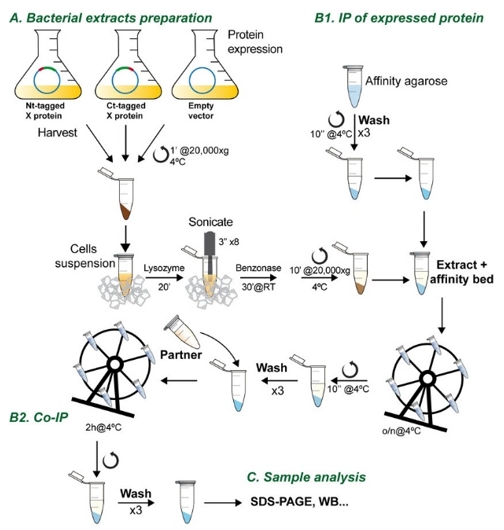Simple Info About How To Detect Protein

It is required for the formation of every part of the body, including teeth and bones, says nutritionist shruti keluskar.for a healthy adult with minimal physical activity, the recommended dietary.
How to detect protein. Detection methods can include colorimetry, fluorescence, and chemiluminescence to Several methods exist that are used in different food industries to quantify protein content, including the kjeldahl, lowry, bradford and total amino acid content methods. Covalent modifications in proteins affect the molecular weight of modified amino acids, so the differences in mass can be detected by ms.
Greek yogurt and cottage cheese. First, a labeled rna probe is incubated with a protein sample (typically from a cell lysate) to initiate binding and formation of the interaction complex. Can detect proteins at low concentrations (ng/ml to pg/ml) in blood and body fluids, such as for pharmacokinetics.
Protein detection evaluates the concentration and amount of different proteins in a particular specimen. Western blotting is the most widely used method to detect specific protein expression levels in cells or tissues using highly specific antibodies and molecular weight markers for protein verification. Protein, also known as polypeptides, is one of the important nutrients that plays different crucial roles in the body.
Protein detection is used for clinical diagnosis, treatment and biological research. Ms can detect nearly all ptms and can also be used to identify unknown ptms. Lysinuric protein intolerance:
Mass spectrometry is a technique that is useful for determining the size of a protein or protein complex. Uniprotkb consists of two sections: Meat is a top source of protein, serving up about 7 grams of protein per ounce, and many dietitians say to aim for lean cuts, such as chicken breast or lean ground turkey.
We barcode the proteins from single cells by tagging them with oligonucleotides, pool barcoded cells together, run bulk gel electrophoresis to separate protein and its ptm isoform and quantify. The ones that we can't produce on our own are called essential amino acids. the dietary guidelines for americans recommend adults consume 0.8 grams of protein per kilogram of body weight. The correct determination of the protein content of foods.
Be able to probe the proteins transferred to the nitrocellulose or pvdf membrane using antibodies specific to the target protein (primary antibody specific to the target protein and a secondary antibody containing a detection signal such as horseradish peroxidase specific to the primary antibody bound to the target protein). Some of the pros of ms are that it is very. Advances in mass spectrometry have helped scientists detect protein glycosylation in vitro;
A rare genetic condition in which the body cannot digest and use specific amino acids, namely lysine, arginine, and ornithine.; They add that this amount is in line with the acceptable macronutrient distribution range for protein and is consistent with usda. Only one antibody is required to detect the protein.
Preliminary animal research shows conflicting results on whether supplemental lysine increases cholesterol levels. Specifically can detect protein down to pg/ml. Towards a definitive cellular phenotype methods that allow researchers to simultaneously sequence rna and detect extracellular proteins in individual cells.
Protein detection by sequencing: As a first model protein to test whether nanoantennas can detect protein activity, we selected calf intestinal alkaline phosphatase (ap; Because luciferase enzymes are bioactive proteins, they can be expressed in cells or even live animals to detect proteins, small molecules or gene expression in real time.
















